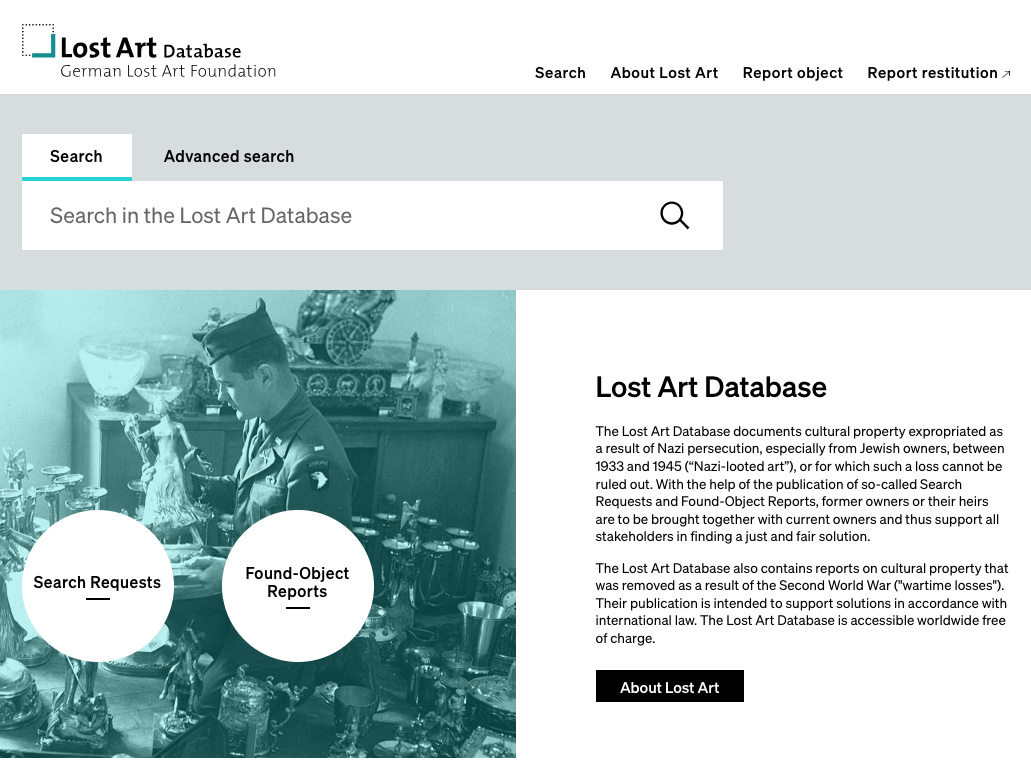Provenance Revealed: Is My Artwork “Lost”?
Under the title “Provenance Revealed”, we present in an exciting series of articles how to deal with provenance research in daily practice. In our fourth contribution, we explain how art owners can proceed if a search report on their artwork is found in the Lost Art database.
Clients who have purchased artworks that they later suspect may have a problematic history find themselves in an uncertain situation. Every look at the work is associated with questions as to whether it can continue to be exhibited, is tradable and what happened before the last purchase. Final certainty is usually provided by an entry in the Lost Art database.
Many art owners do not decide to sell immediately, but consult experts. This gives them the opportunity to clarify the provenance of the work in detail and to find out about any third-party claims.
For years, Karl & Faber has made it its responsibility to provide clients with the best possible service in all cases of unclear provenance and especially in cases that could become restitution cases. For this purpose, there is a highly qualified team in-house, consisting of art historians and lawyers, who take care of the individual cases.
The research begins with clarifying the provenance as completely as possible. Thanks to years of collaboration, our art historians have access to archives worldwide, both at universities, museums and in the art trade.
As soon as the provenance has been clarified and the heirs have been located, the legal processing begins. Depending on the degree of relationship of the heirs, the circumstances of the expropriation, as well as the value and whereabouts of the art works, compensation is determined as a percentage of the sale price of the work. With a contract between the heirs and the current owners, a fair and equitable solution is agreed and all claims are settled. The work is now free of restitution claims.
Giving all works back their history, showing the provenance without gaps, obtaining a deletion from the search registers and making the object tradable again is then the final task that falls to us as an auction house.
A work listed as “lost” can ultimately be more valuable than ever before – if free of “claims” by third parties.
Romana Forst
If you have any questions about your works of art, please do not hesitate to contact us.
A current example can be found in the work “Spaziergang” by Max Slevogt.


